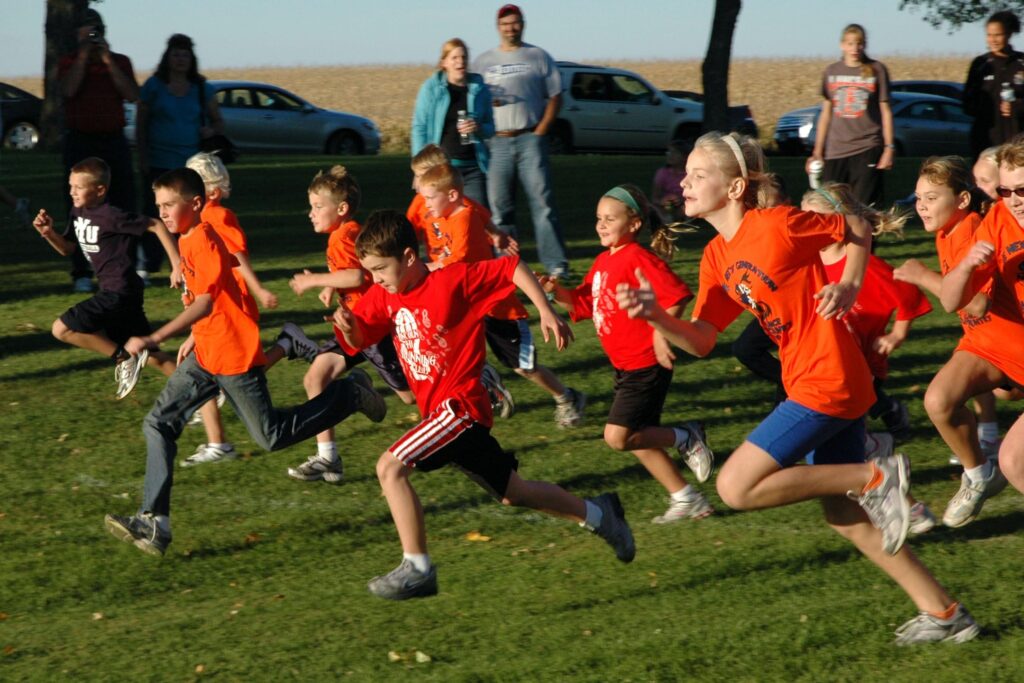Membership to running clubs offers numerous benefits to both new and experienced runners alike, providing a sense of camaraderie, motivation, and structured training to help individuals achieve their running goals. Joining a running club allows members to connect with other like-minded individuals, creating a supportive environment that fosters progress and a shared love for the sport.
Many running clubs cater to a wide range of skill levels, accommodating runners of all ages and backgrounds. Additionally, some clubs provide access to coaches and experienced pace group leaders, helping members to improve their running technique and reach their personal goals. With clubs often hosting events, races, and social activities, membership in a running club can be an enriching experience both athletically and socially.
When considering joining a running club, it is important to research the specific requirements and expectations, as well as the benefits offered. Membership may include access to group training runs, discounts on races, coaching, and other resources tailored to support each runner’s journey.
Benefits of Joining a Running Club
Motivation and Friendships
Joining a running club comes with a host of benefits, such as improved motivation and forming new friendships. Being part of a group of like-minded individuals fosters a sense of camaraderie and encouragement that can keep you motivated to achieve your running goals. Additionally, these connections not only lead to improved performance in running but also enrich your social life outside of the club.
Training Programs and Coaching
Membership to Running clubs often provide various training programs tailored to suit different skill levels and running goals. These programs offer structured guidance and support to help you reach your desired targets, such as improving speed or endurance. Moreover, having access to experienced coaches offers invaluable advice and expertise that can help enhance your training and reduce the risk of injury.
Safety and Group Runs
Running in a group offers increased safety compared to solo runs, especially when it comes to navigating unfamiliar routes or running in low-light conditions. Group runs also provide an opportunity to learn from other runners regarding pacing techniques and proper running form. This exchange of knowledge can significantly improve your running abilities and contribute to a safer running experience.
Race Discounts and Events
Membership in a running club often comes with the perk of race discounts, making participation in local and national races more accessible and affordable. Clubs may also have exclusive access to certain events or priority registration for popular races, preventing members from missing out on pivotal race experiences.
Community and Social Events
Being part of a running club allows you to contribute to the local running community, such as organizing and participating in charity events or engaging in volunteer work. Additionally, clubs frequently host social events like post-race celebrations, awards ceremonies, or team parties, fostering a sense of belonging and unity within the club. These events provide members with opportunities for networking, fostering friendships, and enjoying the social aspects of running.

Types of Running Clubs
Nonprofit and School Clubs
Nonprofit running clubs often include government-operated recreation centers, other nonprofit organizations, such as the “Y” or Boys & Girls Club, and also include youth-only running clubs or Cross Country programs supported by schools, parent booster clubs, or local parent/teacher associations RRCA membership. These clubs provide a community-focused environment to promote running and fitness for all ages and skill levels.
Professional Associations
Some running clubs are part of professional associations, such as the Road Runners Club of America (RRCA). These organizations can offer various membership categories and benefits tailored to the needs and interests of running enthusiasts RRCA Membership. They may also provide coaching, training programs, certification, and competitions to enhance the running experience and promote running as a healthy lifestyle.
Brand-Sponsored Clubs
Some large sporting goods manufacturers, such as Adidas, sponsor running clubs which promote their brand and products. These brand-sponsored clubs may offer exclusive access to events, discounts, and other benefits for members, while fostering a sense of community and support among participants. They often have structured training programs and provide opportunities to meet and train with athletes and influencers affiliated with the brand.
Local Groups and Neighborhood Clubs
Local running groups or neighborhood clubs may form organically within communities, schools, and workplaces. They offer a more casual and personal experience, catering to the interests and needs of their members. These clubs can range from informal meetups to organized training sessions or group workouts Running Group. Local groups foster camaraderie and commitment among their participants, creating a supportive environment that encourages runners of all abilities to achieve their fitness goals.
Starting and Managing a Running Club
Forming a Club and Defining Values
Starting a running club might seem like a simple task, but it’s important to carefully plan and define the club’s values in the early stages. Forming a club is similar to starting a small business, so try to create a solid foundation for long-term success. Schedule a planning meeting with stakeholders, and use digital meeting platforms if necessary. During the meeting, discuss the club’s mission, target audience, and core values. This will help in creating an inclusive and welcoming environment for all members.
Board of Directors and Club Management
Effective club management requires a well-organized board of directors. Each board member should have clearly defined roles and responsibilities to ensure the smooth running of the club. It’s crucial to establish a system for leadership transitions to maintain continuity as board members come and go. Club leaders should also invest in a database system to manage member information, payments, and communication.
Fundraising and Membership Fee Strategies
Financial stability is vital to the success of a running club. Developing a membership fee structure and exploring various fundraising options will help support club activities and events. Consider offering tiered memberships with different perks or discounts for larger families to accommodate a variety of budgets. Fundraising events, such as charity races or group sponsorships, can provide additional income and publicity for the club.
Safety and Inclusion Policies
It’s essential to prioritize the safety and well-being of all club members. Implement safety guidelines and emergency plans for group runs and events. Ensure that leaders and members are aware of these policies and that everyone follows them. The club should adopt an inclusive approach, welcoming members from diverse backgrounds and catering to different fitness levels. This will contribute to a positive and friendly atmosphere, encouraging more people to join.
Marketing and Online Presence
An attractive online presence will help attract new members and keep current members informed. Design a functional and user-friendly website that showcases the club’s values, events, and member benefits. Utilize social media platforms to engage with the community and share club news or accomplishments. Promote the club through local events, partnerships with other organizations, or targeted advertising campaigns. A strong marketing strategy will help the club grow and sustain its membership base.
Running Club Membership Processes
Joining a Club and Membership Management
Joining a running club can be an exciting experience for both beginner and experienced runners. To become a member, individuals typically need to fill out an application form and pay an annual or monthly membership fee. Some clubs, like those affiliated with the Road Runners Club of America (RRCA), offer a more advanced membership management system that automatically sends welcome messages and renewal reminders to members. This helps clubs efficiently manage their membership base, ensuring a smooth onboarding experience for new members and facilitating communication with existing ones.

Family and Individual Membership Options
Running clubs often provide various membership options to cater to the diverse needs of their members. Both family and individual membership plans are commonly available, allowing parents, children, and solo athletes to join together or separately. Typically, family memberships come at a discounted rate compared to individual memberships. This makes it more affordable for families with multiple runners to participate in club activities and events.
Athlete and Runner Profiles
To enhance the running club experience, many clubs offer the option for members to create athlete or runner profiles. These profiles generally include personal information, such as run history, personal records, race results, and age group rankings. By maintaining a runner profile, members can keep track of their progress, set new goals, and compare their achievements with other club members.
Member Benefits and Discounts
Membership in a running club often comes with numerous benefits and discounts for members. For example, members may receive discounted entry fees to races, access to exclusive club events, and opportunities to participate in group training sessions. Additionally, some clubs also offer their members access to grant opportunities, discounts on event sanction fees, and the use of the club’s logo for personal reasons. These benefits and discounts serve as incentives for individuals to become members and contribute to the overall growth and success of the running club.
Running Club Events and Activities
Group Training Runs and Races
Running clubs often organize group training runs to help members improve their fitness and prepare for upcoming races. These group runs provide a supportive environment for runners of all levels to train together, share tips, and stay motivated. Additionally, clubs may host their own races or coordinate participation in local races, giving members priority access to race registration and supporting their race-day efforts.
Track and Field Events
Many running clubs offer track and field events to help members hone their skills in various running disciplines, including sprints, middle-distance, and long-distance events. Clubs with access to a track may arrange weekly track sessions and organize events such as time trials and relay races. Participation in these organized events enables members to develop their speed, endurance, and racing strategy.
Marathons and Road Runner Events
Running clubs often emphasize the importance of marathons and other road running events, such as half-marathons and 10Ks. Clubs affiliated with the Road Runners Club of America may host or participate in sanctioned events, such as the Boston Marathon. Many clubs organize group training programs specifically designed to prepare runners for marathons or other road races, providing guidance on training schedules, nutrition, and injury prevention.
Volunteer and Community Outreach
Running clubs often engage in volunteer and community outreach activities, such as organizing charity races, participating in local environmental initiatives, and working with schools and other organizations to promote health and fitness. By getting involved in these activities, club members have the opportunity to give back to their communities and make a positive impact while sharing their passion for running.
Running Club Partnerships and Affiliations
General Liability Insurance Coverage
Running clubs often partner with organizations that provide general liability insurance coverage for their members. This insurance can protect the club and its members from potential lawsuits that may arise during running events or training sessions. Some clubs may also require members to sign waivers to further reduce legal risks.
Equipment and Accessory Discounts
Running clubs may establish affiliations with sports equipment and accessory manufacturers and retailers, providing members discounts on running gear. These partnerships help clubs encourage members to buy and use quality running equipment, improving their performance and reducing the likelihood of injury.
Boston Marathon and Other Major Races
Running clubs often establish affiliations with major road races like the Boston Marathon. These partnerships can provide club members with easier and prioritized access to race registration, and sometimes even special race entry quotas reserved specifically for club members.
Brand and Corporate Partnerships
To support their revenue and growth, running clubs may forge brand and corporate partnerships with companies that share their values and goals. These partnerships can offer clubs financial support, and in return, brands receive publicity and promotional opportunities within the club’s events and communication channels.
Running club partnerships and affiliations provide a range of benefits, from insurance coverage to equipment discounts and access to major races. Through these mutually beneficial arrangements, clubs support members in pursuing their running goals, and contribute to the overall growth of the club and the sport itself.


9 thoughts on “Membership to Running Clubs: Benefits and How to Choose the Right One”